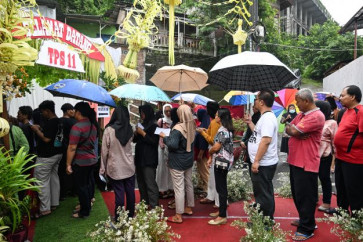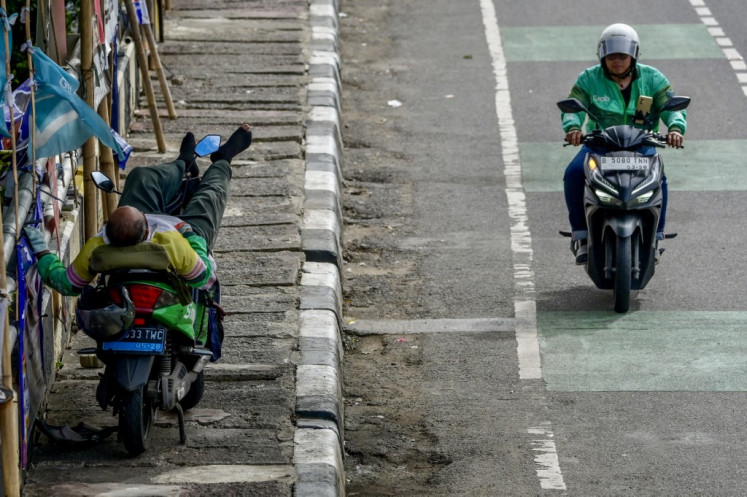Dance performance narrates importance of harmony
A mesmerizing performance on Friday by the Sekaa Barong Putra Samanjaya troupe from Kawan hamlet, Jumpai village, Klungkung, spoke of the importance of harmony in Balinese Hindu philosophy
Change Size

A
mesmerizing performance on Friday by the Sekaa Barong Putra Samanjaya troupe from Kawan hamlet, Jumpai village, Klungkung, spoke of the importance of harmony in Balinese Hindu philosophy.
Held on the Ratna Kanda stage in the sprawling compound of Denpasar's Werddhi Budaya Art Center, the troupe presented barong swari, a barong (a lion-like mythological creature) and mask dance drama inspired by a lontar-leaf text of the same name.
The storyline centers on a plague-ridden world, where the human population is decimated by numerous terrifying diseases.
The lontar manuscript details that the outbreak of disease is triggered by Uma, the wife of Lord Siwa. Uma is banished from heaven by Siwa and sent to earth.
Her rage later transforms her into Durgha, traditionally known as the Goddess of Death and the patron deity of black magic practitioners. Durgha's wrath disrupts the harmony and balance of the universe.
Seeing that the world is at the brink of catastrophe, the Tri Murti, the three principal deities: Brahma the Creator, Wisnu the Sustainer and Iswara the Destroyer, descend onto earth to restore its balance.
Brahma transforms into Topeng Bang (red mask), Wisnu into Telek (white mask) and Iswara into Barong, a creature believed to be the amalgamation of the spirits of all elements in nature.
The three deities perform a dance that eventually appeases and pacifies Durgha. The scary-looking Durgha returns to her original, beautiful form of Uma, and harmony is restored.
Until now, Hindus still believe that plague and disaster are a reflection of a world in discord. A large majority of Hindu rituals and performing arts is aimed at restoring balance and harmony.
The group coordinator, I Ketut Suarjana, said that the dance was part of the bebali (semi-sacred) dance, which was usually performed during a religious ceremony.
'It is not a sacred dance, but the dance is usually performed during a religious ceremony, such as piodalan (temple anniversary),' Suarjana said.
Balinese performing arts are divided into wali (sacred dance), bebali (semi-sacred dance) and balih-balihan (dance for entertainment purposes).
In Jumpai, the barong swari is performed every 15 days in local temples. The village has two barong swari troupes and they take turns performing the dance drama.
Suarjana said villagers believed dance performances were necessary to prevent epidemics. 'Our ancestors have said that epidemics hit our village many years ago. There have been no epidemics since the dance performances started. Thus, we have to perform the dance regularly to prevent epidemics' he said.
In the performance on Ratna Kanda stage, the troupe did not use the sacred barong of Jumpai village. A replica was used instead.
'The sacred barong will only be performed in the context of the rituals in our village,'
In other villages across the island, this tradition of performing the barong dance to ward off epidemics is known as Ngelawang, during which the sacred barong of the respective village makes door-to-door visits to villagers' homes to inspect his 'subjects', and to ensure their well-being.









